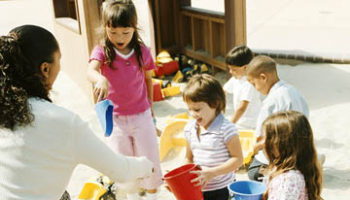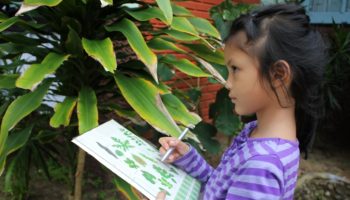Lisa Mulliken
From peg to frame to floor, puzzles provide children with many play opportunities and learning experiences, but organizing and storing these fine motor materials in the classroom can be… puzzling!
How do you organize and store puzzles in a way that invites exploration and engagement and also allows children to independently clean up when finished?
Store puzzles in a designated area with organized storage and ample space for use.
Storing puzzles in a well-organized fine motor interest center or play area allows ample space for puzzle storage and use. Table or floor space should be provided for the number of children the area can accommodate at one time. Organizing and providing ample materials and space helps to avoid conflict created by crowding or competition for space and materials.
Store puzzles so that they are easily accessible.
For older children, frame puzzles can be stored on puzzle racks on low, open shelves. For younger children, consider placing a few puzzles individually on the shelves, as sliding the puzzles in and out of the rack may be a difficult task for tiny fingers. Or place only a few puzzles in the rack, with plenty of space in between, to allow children to easily see and access the puzzles. Floor puzzles can be stored in their original boxes in labeled, open containers or in bins with lids that are easily removed. Avoid stacking puzzles on top of each other or on shelves crowded with other types of materials. Puzzles should be checked frequently to assure that they are in good repair with all pieces intact. Consider providing large trays or puzzle mats to allow children to store and continue work in progress.
Provide puzzles that are appropriate for the ages, abilities, and interests of the children in the classroom.
To meet the needs of all the children in the classroom, provide a mix of simple and challenging puzzles throughout the year or start out the year with simple puzzles and slowly add more challenging options as you assess children’s needs and interests. Sturdy wooden puzzles are appropriate for younger children, while pressed cardboard and foam may be appropriate for older children. Keep in mind that some children may not have had opportunities for puzzle play at home and may need teacher or peer support during initial puzzle play.
Provide interesting options to spark children’s interest.
Provide a wide variety of puzzles with familiar subjects (familiar routines, farm animals, shapes, numbers) and puzzles representing special themes, diversity, and children’s interests (trains, dinosaurs, community helpers). Rotate puzzles on a regular basis to allow children the chance to explore different subjects and levels of difficulty.
For more information on choosing puzzles and the benefits of puzzle play, check out the following links:
Which Kind of Puzzle is Right for My Child?
The Benefits of Puzzles in Early Childhood Development
 We want to hear from you! Please click the link below to complete a quick survey about your experience reading the “Let’s Talk Quality! PQA in PA” blog. You will be entered to win a prize, that will be awarded at the end of the month. We thank you for your time and welcome your feedback!
We want to hear from you! Please click the link below to complete a quick survey about your experience reading the “Let’s Talk Quality! PQA in PA” blog. You will be entered to win a prize, that will be awarded at the end of the month. We thank you for your time and welcome your feedback! Blog Survey




